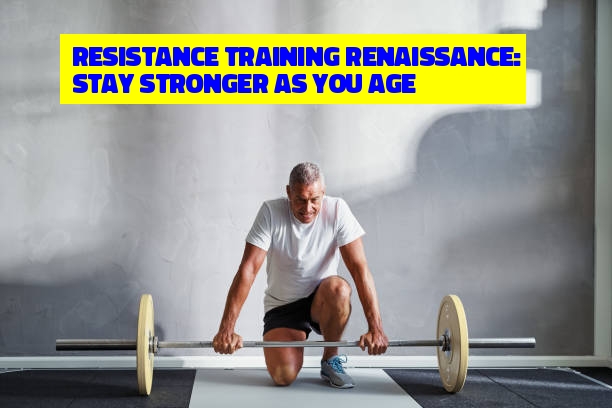You can do resistance training at home with a pull-up bar, a pair of dip bars, and a plyometric box. You can probably use a sturdy chair instead of the plyometric box (for step-ups, not jumps), a pair of sturdy chairs instead of dip bars for dips, and a table for pull-up rows, but the proper equipment isn’t expensive. I enjoy cardio and hate resistance training, but having the equipment at home allows me to “just do it” on Monday, Wednesday, and Friday. I would never find the motivation to go to a gym.
A few tips I’ve picked up: Take the long view, build up slowly, and your joints and ligaments will become stronger too. Have a gentle warm-up or loosen-up before resistance training. Don’t overdo it; stress your muscles, but don’t exhaust yourself, or you’ll be too busy recovering to grow. Get plenty of rest. To make the last few reps more productive and less effortful, use ‘eccentric’ work, that is, lower the weight as slowly as you can. You can lower a heavier weight than you can lift when the muscles are tired, and it is actually more productive. It can be done solo for many bodyweight exercises, but you may need some help with weights. Remember that your effective strength will vary, so don’t expect to equal or improve your best every time. Sometimes it just seems hard, so do what you can. Don’t beat yourself up if you can’t face a session, or maybe just do one exercise; sometimes you feel better once you get started.
To clarify, strength, anaerobic, and resistance training are high-load and low-repetition exercises that engage fast-twitch muscle fibers that don’t use oxygen to break down glucose. For a short time (30–90 seconds, up to 15 reps to failure), they can output a lot of power, and they give strength and bulk to the body. Cardio, aka aerobic exercises, are low-load, high-repetition exercises (over 40 seconds, over 15 reps) that engage slow-twitch muscle fibers that use oxygen to burn glucose. They don’t have much strength, but they can go for much longer. These exercises improve resilience and train the cardiovascular system.
Push, pull, hinge, squat, and carry exercises will cover all the bases. You can combine these for compound movements. Lift 2-3 times a week; do 2-3 sets of each movement with heavy enough weights that you start to feel muscle failure after eight reps. Don’t make it harder or overcomplicate it. Just do it. Your future self will thank you.
Resistance Training: Personal Advice from My Friends
Nick – I’m in my mid-60s, swim miles in the sea, cycle over hills and dales, and swing kettlebells in testing workouts. I’m strong and fit. The only deterioration I’ve noticed is that I cycle a little slower but still have great endurance. I have no plans to become sedentary. I also cook all my meals from raw ingredients. It eludes me why these fundamental benefits are ignored by the majority of the population.
Tom – I am 55 and started lifting weights (powerlifting) when I was 47 to 48. When I was suicidal (life throws shit at me, but I am staying strong, etc.), it definitely helped my mood and my health. Richard Schuller’s book Powerlifting Over 50 and Johnathan M. Sullivan’s The Barbell Prescription were both well worth reading. I am now stronger than when I was in my 20s, and I have surprisingly found myself being someone’s eye candy while in town. I have a trashed knee from an accident in my 30s; doing squats, etc. has definitely helped me retain some movement. I tend to do my lifts three days a week (squat, bench, and deadlift) and boxing-based cardio a couple of days a week. I normally do 16:8 intermittent fasting and lift weights while fasting. Definitely worth doing!
Steve – I’m 73 and do a lot of power yoga, which includes resistance training exercises such as push-ups, arm balances, chatarangas, etc. I also add additional pushups and sometimes lift free weights. The yoga has really improved my muscle tone, strength, biceps, etc. So I do think the more strenuous forms of yoga can give you a good degree of resistance training.
Jacob – I’m nearly 66, and for a year I had a personal trainer and managed to reverse my pre-diabetic blood sugar levels back to normal levels. We completely focused on resistance training. Then my PT left to work abroad, and instead I used EGYM at my health club—machines configured specifically for each person to give a complete body workout that is extremely safe and takes away the headache of trying to decide what routine to do. EGYM is based on a gamification model: you are working through levels (if you don’t go, you drop a level!) plus rewards of badges and motivating messages, which are a huge incentive to carry on. I have seen enormous improvement in my strength (the dashboard says I have the strength of a 37-year-old, comparing my results with the system’s massive data set). I was doing EGYM twice a week, but after this podcast, I will add at least one more visit. I also play tennis two or three times a week to give me good cardio (and lots of fun).
Ryan – At 50, I’m stronger now than I’ve ever been, and it feels amazing, but it’s not from doing weights! Weight workouts stink; they are so boring, and that’s why most people never stick to them. If you’ve listened to this and know you need to do more resistance training but know you will never stick to a workout, go find your local climbing gym and climb a couple of times a week. You’ll get stronger, make some friends, use your brain, and probably improve other aspects of physical health such as balance and flexibility.
James – I’m 60, but I started doing HIIT (High-intensity interval training) and resistance training bands plus body weight exercises this year. I’m so much stronger, and my muscles are more toned, plus fat loss shows the muscle. So I don’t feel that, after menopause, it’s more difficult to build muscle for me, but I did consciously increase protein, and I do make sure I get good sleep at night—at least 8 hours a night. I don’t do much running or jumping unless it’s on a tramp because my knees and ankles get sore. But I was a long-distance runner into my 40s, and I think I wore out cartilage. Not sure. I think for me, low-impact cardio with body weight moves almost every day and 3 days of resistance training band training work.
Mason – I’m 68 and have lifted weights since I was 19 years old, but in the last couple of years, I have had to stop the conventional bench press and use a multi-grip bar and much lighter weights because my shoulders are a little bit painful at times. My mind wants to lift heavy, but my body won’t let me, but I will keep weight training because I feel so good after it.
Lucas – I am 64. I’ve spent six weeks bed-bound and not eating. I was then in the hospital for a week. I am now on an enteral diet, so I have limited calories. I got home from the hospital and couldn’t even lift my feet to get in the house. I was so weak and still am. My sister bought me a resistance training band, and I found some stuff to do online with it. There have been minor improvements in just two weeks. I think now, after watching this, I have a much clearer idea about what to do with the band and some weights I already have. Thank you so much.
Very interesting. I will try harder to do some resistance training.

